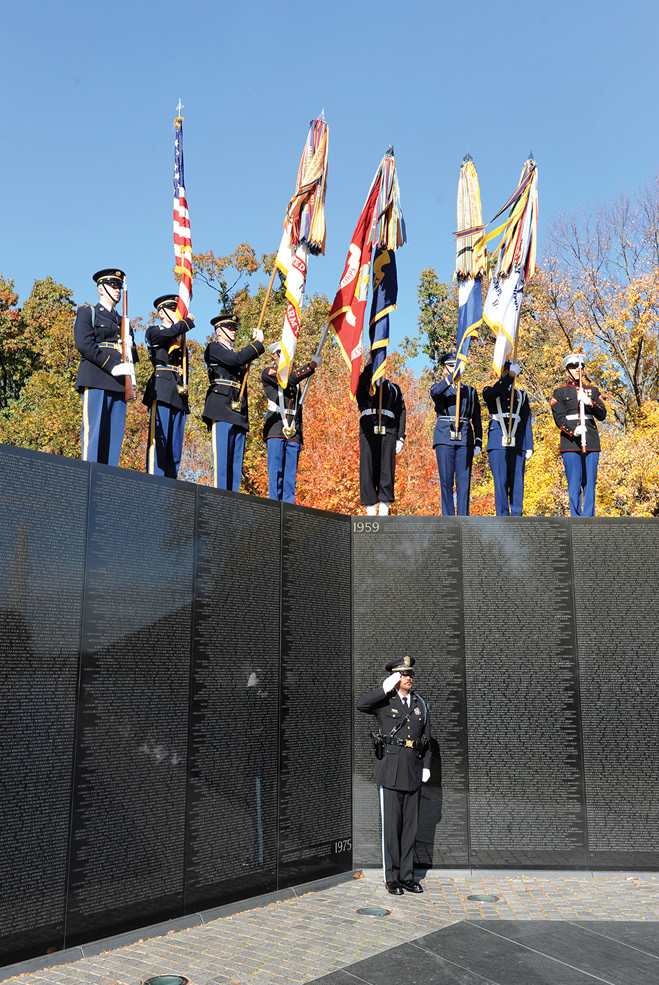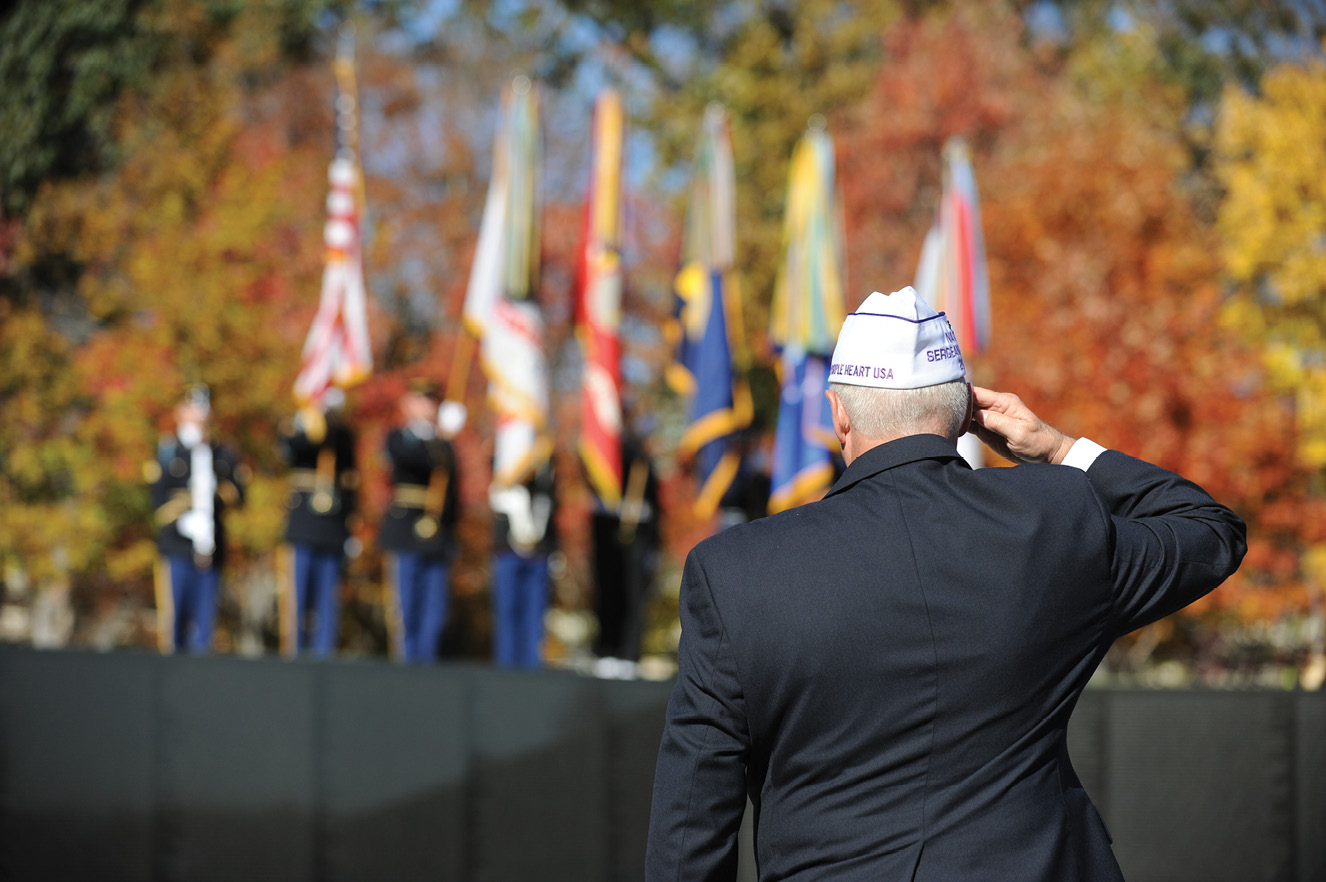- Home
- Media Kit
- Current Issue
- Past Issues
- Ad Specs-Submission
- Ad Print Settings
- Reprints (PDF)
- Photo Specifications (PDF)
- Contact Us

![]()
ONLINE

Preserving the Legacy of The Wall
Editors’ Note
Jim Knotts is Chief Executive Officer of the Vietnam Veterans Memorial Fund (VVMF), the nonprofit that built The Wall in 1982. He is an Air Force veteran of the Persian Gulf War and a graduate of the Air Force Academy. He now leads the effort at VVMF to honor the service and sacrifices of Vietnam veterans – those who sacrificed all, those who served, and those who waited for the soldiers to return – as well as those who serve today. Preserving the legacy of service from generation to generation – from Vietnam to the Persian Gulf War, to Iraq and Afghanistan – is Jim’s personal commitment and a part of the ongoing education efforts of VVMF.
Organization Brief
Based in Washington, D.C., VVMF (vvmf.org) is the nonprofit organization authorized by the U.S. Congress in 1980 to build a national memorial dedicated to all who served with the U.S. armed forces in the Vietnam War. Incorporated on April 27, 1979 by a group of veterans led by Jan C. Scruggs, the organization sought a tangible symbol of recognition from the American people for those who served in the war. The result was the Vietnam Veterans Memorial (commonly referred to as The Wall), which has become one of the most visited memorials in Washington, D.C. with an estimated 4.5 million annual visitors. Since the dedication of The Wall, VVMF has pursued a mission of preserving the legacy of The Wall, promoting healing, and educating about the impact of the Vietnam War. Their latest initiative is the campaign to build the Education Center at The Wall, which will show the pictures and tell the stories of those who made the ultimate sacrifice in Vietnam, provide a rich educational experience on the Vietnam War, show some of the more than 400,000 items left at The Wall, and celebrate the values exhibited by America’s service members in all wars.
What has the Vietnam Veterans Memorial meant to the service members who served during that era?
The Vietnam War was arguably the most divisive event in our nation during the 20th Century. Though nine million Americans served in the Vietnam era with three million of those in Southeast Asia and more than 58,300 made the ultimate sacrifice, there were countless others whose lives were forever changed. Their families, their buddies, and the country as a whole were wounded. The Wall has helped heal that generation and our nation, and continues to be a place of healing for all generations of veterans, from Vietnam through Iraq and Afghanistan.

Veterans Day at the
Vietnam Veterans Memorial in Washington, D.C.
Would you explain the meaning of “Wall magic” and share examples?
“Wall magic” is the amazing healing power of the memorial. In D.C., a group of high school buddies who served in Vietnam visited The Wall with their kids and grandkids. By coincidence, there was an older couple there as well, the parents of one of the buddies who never made it home. The parents’ eyes drifted to the families that existed only because these men survived to come home and restart their lives. What they saw was the image of what might have been: a lifetime of memories.
Recently, an older gentleman visited our mobile exhibit with his two grown daughters. He was looking for his son’s name and told us his story. Until six months prior, he didn’t even know he had a son. A former girlfriend had contacted him and told him about their son who died in Vietnam. Pulling up photos of his son from our website, the man got to see him for the first time. The resemblance was uncanny.
In addition to The Wall in D.C., is VVMF involved in any other activities?
We have a half-scale Wall replica that travels to 30-plus communities each year. We have a virtual Wall of Faces where visitors can post photos and remembrances. We also focus a great deal of effort on educating people about the lessons of the Vietnam era. We want future generations to remember those sacrifices, and understand the terrible costs whenever our country requires our service members to go into harm’s way.

Veterans Day at the
Vietnam Veterans Memorial
in Washington, D.C.
Describe the plans for the Education Center at The Wall?
The Education Center will add an educational component to what has become one of the nation’s most visited and powerful memorials. We are currently raising nearly $90 million for the project. Like The Wall, it must be built with all private funds. We expect to have fundraising complete and start construction in 2018, and open the doors to the public in 2020.
How will the concept of service be tied to the Education Center?
The theme of service will run throughout the center. One exhibit is called “The Legacy of Service” and introduces visitors to the long tradition of service in America from the Revolutionary War to present day. We expect more than two million visitors per year at the center and each of them will be encouraged to serve in their own communities so that the legacy continues. The center will be a call to action in itself. If even 10 percent of visitors return home and lead a service project in their communities, we could make our country better.
What do you hope the Education Center will accomplish?
In keeping with the spirit of The Wall, we hope to teach future generations about the value and importance of service. I think about fifth-graders 20 years from now, visiting D.C. on a field trip, who will see Vietnam only as history and be far removed from any name on The Wall. I want them to better understand the people who served, the values they stood for, and how the legacy of service still impacts them.
We hope to teach
future generations about the
value and importance
of service.
Why does Vietnam still matter?
The impact on our society has been immeasurable. We were affected as a society – socially and politically – and learned lessons that should never be forgotten. It was Vietnam veterans who vowed to never again let a generation of Americans go to war without the support and respect they deserve. Today, we often see strangers going up to Iraq or Afghanistan veterans and saying, “Thank you for your service and welcome home.” That is a direct result of work done by Vietnam veterans to make sure that service is properly honored, no matter personal feelings on the war.
Who could stand to benefit from a visit to The Wall?
Obviously, I feel that every American would benefit from a visit. It is sobering and thought provoking. The people who most need to keep in mind The Wall and everything it stands for are the people in the White House making decisions about the use of military force. The same goes for every member of Congress who legislates and appropriates for our military, everyone at the State Department who works to find diplomatic answers to global crises, leaders at the Pentagon, planning and fighting our wars – these are the people who must gaze upon the names on The Wall and think of the sacrifice each person made as they contemplate the sacrifices they are asking of our newest generation of service members.
The 58,300 will call to them, and speak to them of service, sacrifice, and ideals larger than themselves. Their plea will always be to remember the tremendous power and awesome responsibility they bear with every decision.•